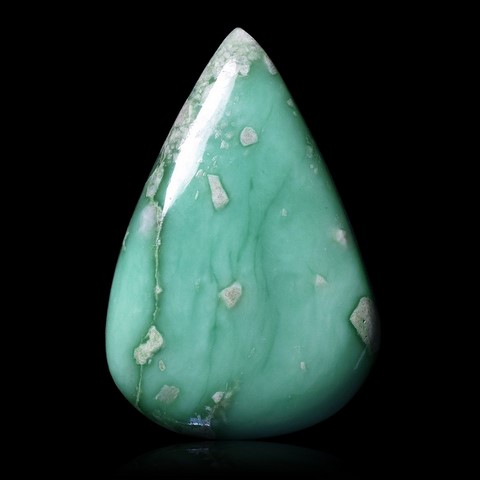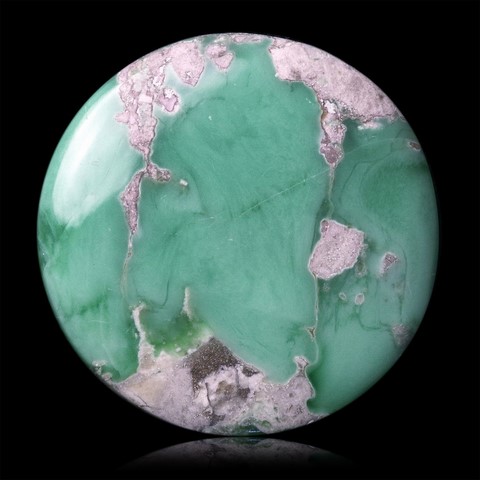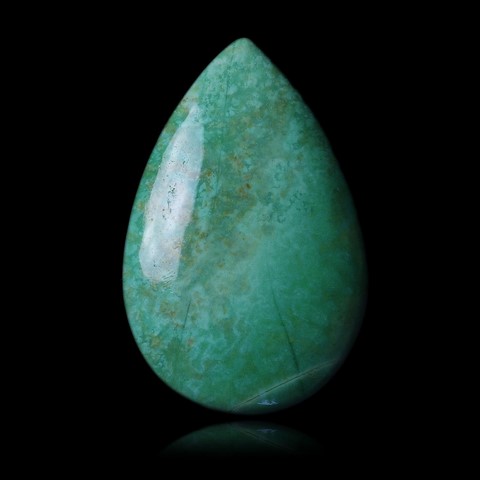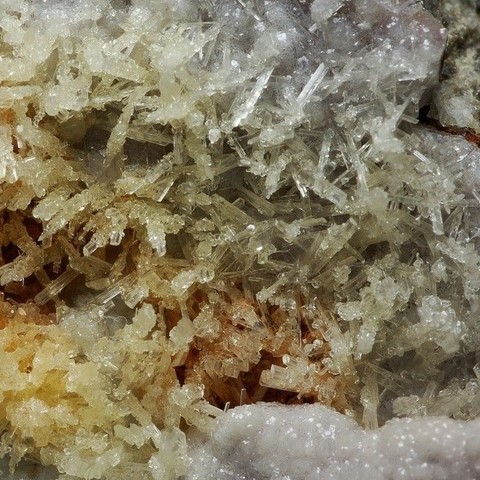VARISCITE
Class : Phosphates, arsenates, vanadates
Subclass : Hydrated phosphates
Crystal system : Orthorhombic
Chemistry : AlPO4 2H2O
Rarity : Fairly common
Variscite is a secondary phosphate present mainly in aluminous sedimentary formations transformed under the action of meteoric waters or hydrothermalism. Aluminum can be replaced by Fe3+ thus constituting a continuous series with strengite, which explains the unusual red tint of some specimens. This mineral owes its name to its region of discovery : Variscia, currently renamed Vogtland (Germany). The crystals of this mineral species are extremely rare, very small, and present a distinct octahedral facies. Variscite almost exclusively forms nodules (up to 30 cm in diameter) and cryptocrystalline masses of a beautiful pale green to deep green, revealing after sawing growth figures in concentric rings. Its density is quite low (2.6 on average). Mixed with wardite, variscite provides an aesthetic ornamental stone sometimes used in decoration (Utah). It also seems that in the past it benefited from the use of adornment : the pearls discovered in the Celtic tomb of Mané-er-Hroec'h in Locmariaquer (Morbihan, France) are in variscite, the color of which strongly recalls that of turquoise.
Variscite in the World
Variscite in France
In France, the Pannecé quarry (Loire-Atlantique) produced masses with a pisolithic texture of several kilos, associated with wavellite and miniyulite. The kaolin quarries at Echassières (Allier) also provided transparent infra-millimeter microcrystals, sometimes on wavellite needles.
Twinning
No twinning known for this mineral species.
Fakes and scams
No fake inventories for this mineral species.
Hardness : 3.5 to 4.5
Density : 2.6
Fracture : Irregular
Trace : White
TP : Opaque to translucent
RI : 1.563 to 1.594
Birefringence : 0.031
Optical character : Biaxial -
Pleochroism : Not observable
Fluorescence : Green
Solubility : Hydrochloric acid and caustic soda
Magnetism : None
Radioactivity : None





